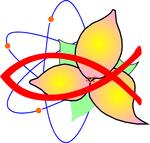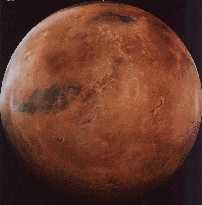
Ancient Astronomy
by David M. Harris
Ancient Astronomy - did the ancients know more than we do?
If Creation and the details given to us from Scripture are true we would expect that people once knew a vast amount about the universe, and over time this was lost. Only recently, due to the prophecy given in Daniel, are we regaining some of that lost knowledge. If evolution is true we would expect that we know more now than we have ever known, and over time we always increase in knowledge. Far from the evolutionary idea that the ancients knew less than we did about the celestial bodies, there is much evidence that shows they knew more than us.
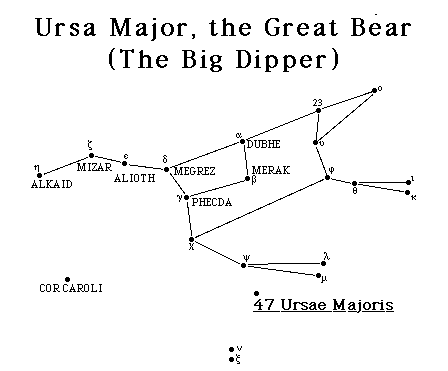
Ursa Major constellation Let us examine the information of one of the oldest books in the world, the book of Job. In Job 38:42 it tells us 'Canst thou bring forth Mazzaroth in his seasons? or canst thou guide Arcturus with his sons?'(KJV/AV) This is God speaking to Job, going over some of the celestial occurrences that Job was evidently aware of. However the translation is somewhat uncertain. When other versions are examined we get 'Can you bring forth the constellations in their seasons or lead out the Bear with its cubs?' (NIV) This does not even confirm that a celestial event is being referenced. Indeed 'the Bear with its cubs' could mean the creature rather than the constellations Ursa Major and Ursa Minor. Then again 'Can you lead forth the Mazzaroth in their season, or can you guide the Bear with its children?' (NRSV) also does not indicate a celestial event.

Ursa Minor constellation It is not surprising that the meaning is uncertain, since the Hebrew term 'Ayish' is used only twice in the Hebrew Scriptures, and in both instances it refers to the same event. The star 'Arcturus' is guessed at, but by no means certain. Let us examine this further. 'Arcturus with his sons' relates to the way Arcturus is set in the sky to the lower left of Ursa Minor and Ursa Major, the little bear and the great bear. Other versions, as mentioned, relate to the bear constellations. However the great bear is never thought to be a 'bear cub', so it really could not be considered a 'son of Arcturus'. It may be considered a parent of the little bear, however we then have only one child, not two. Further to this, at this time there were considered to be two types of stars, the fixed stars, which we call the 'stars' today, and the movable stars which we call the 'planets' today. The word planet means 'wanderer'. Since the Hebrew, and indeed the English versions mentioned, indicate movement it is reasonable to assume that this word could indicate a planet in modern English, perhaps more easily than it could indicate a star. Indeed the Hebrew word for 'Arcturus' as given here, 'Ayish', means 'to hasten'. The Hebrew word for 'bear' is definitely not 'Ayish', but 'dob' as seen in 2 Kings 2:24.

If 'Ayish' refers to a planet, which one would it be? There is one planet that does indeed lead 'two sons', or as we would call it, two moons, that is Mars. Other planets visible are Venus and Mercury (with no moons), and Johannes KeplerJupiter and Saturn with many moons. The moment you view Jupiter with any optical aid you see not two, but four moons. Saturn with a low range telescope would show one moon, with a powerful telescope more than four moons.
In 1610, Johannes Kepler, a devout Christian man, and one often referred to as the father of modern astronomy, predicted that two moons would be found around Mars. Kepler wrote what many consider to be the first science fiction story ever called 'The Dream.'
[Johnnes Kepler Gesammelte Werke (Munich: C. H. Beck, 1937), Vol. I, frontispiece.]

Jonathan Swift This is also possibly backed up by another science fiction story, the story of Gulliver's Travels by Jonathan Swift. In the visit of Lemuel Gulliver to the land of Laputa (part three) we learn of some very advanced, though rather eccentric scientists.
Laputa is the sixth of the seven worlds of Gulliver. These advanced scientists not only identify that there are two moons of Mars, but also give their distance from the planet and their orbital periods. The values given in the story are very close, within 40%, of the values seen today. This difference could even be because the orbits have changed since the information that Jonathan Swift had. The amazing thing about this is that Swift wrote Gulliver's Travels in 1726. Asaph Hall, the modern discoverer of the moons of Mars, first saw them over 150 years later, in 1877. Obviously Swift had access to other documents that gave him this information. For comparison let us look at the values Swift gave, and the actual values observed today:
Swift Radius
Phobos: 3
Deimos: 5
Swift Revolution
Phobos: 10 hours
Deimos: 30.24 hours
Actual Radius
Phobos: 2.76
Deimos: 6.91
Actual Revolution
Phobos: 7.66 hours
Deimos: 30.24 hours
Difference
8%
38%
Difference
Phobos: 23%
Deimos: 41%
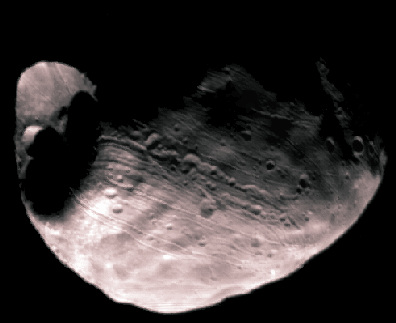
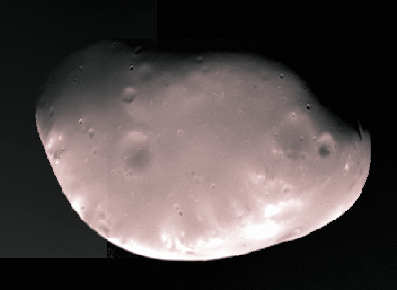
It is obvious from the results that Swift's values were not mere guesswork. Seeing the moons of Mars requires substantial telescopic equipment, or a spacecraft flyby such as the Mariner and Viking spacecraft of the 1970s. Measuring the orbital periods of these moons cannot be done from Earth with our best equipment today. Either this was knowledge that God revealed to the ancients, such as Job, or it is possible that Earth people once saw Mars through very sophisticated astronomical equipment, that is beyond anything that we have at present. During the first millennium or so after God created these super intelligent beings called Adam and Eve, many scientific and technological achievements were probably made like this.
Again this evidence supports the creation view instead of the evolution view that shows people becoming more and more technically able. In reality in many ways we are less technically able than human beings of thousands of years ago. This is the view that would be predicted by creationist views of history, based on Biblical teachings.
Quote from: Gulliver's Travels, Part 3, chapter 3
'They have likewise discovered two lesser stars, or satellites, which revolve about Mars, whereof the innermost is distant from the center of the primary planet exactly three of his diameters, and the outermost five; the former revolves in the space of ten hours, and the latter in twenty-one and a half; so that the squares of their periodical times are very near in the same proportion with the cubes of their distance from the centre of Mars, which evidently shows them to be governed by the same law of gravitation that influences the other heavenly bodies.'
Created 1997-02-13
Last modified 2001-07-23,
by webservant David Harris; e-mail david@creationdiscovery.org
© 1997 David M Harris
URL: http://www.creationdiscovery.christianissues.org
